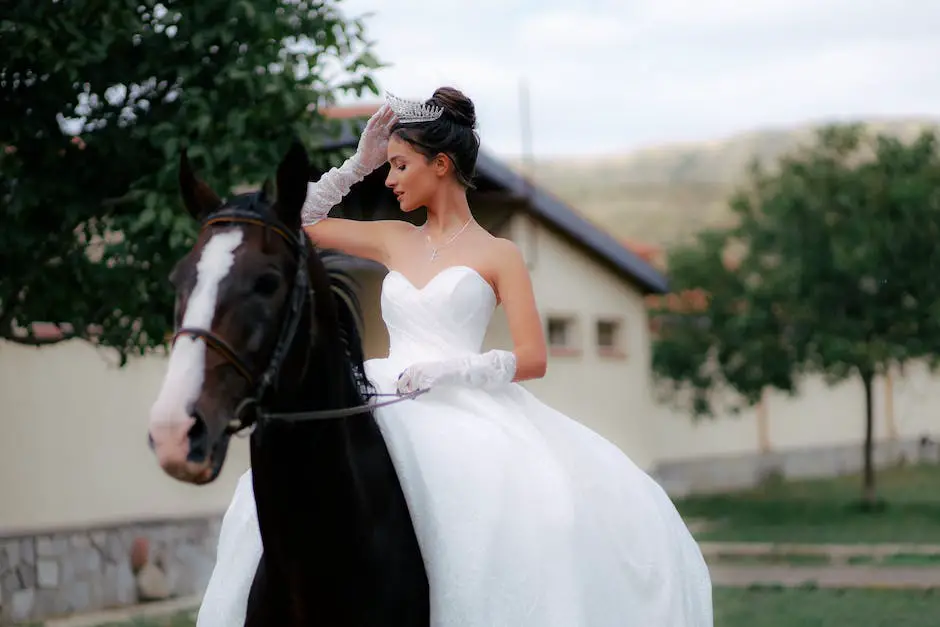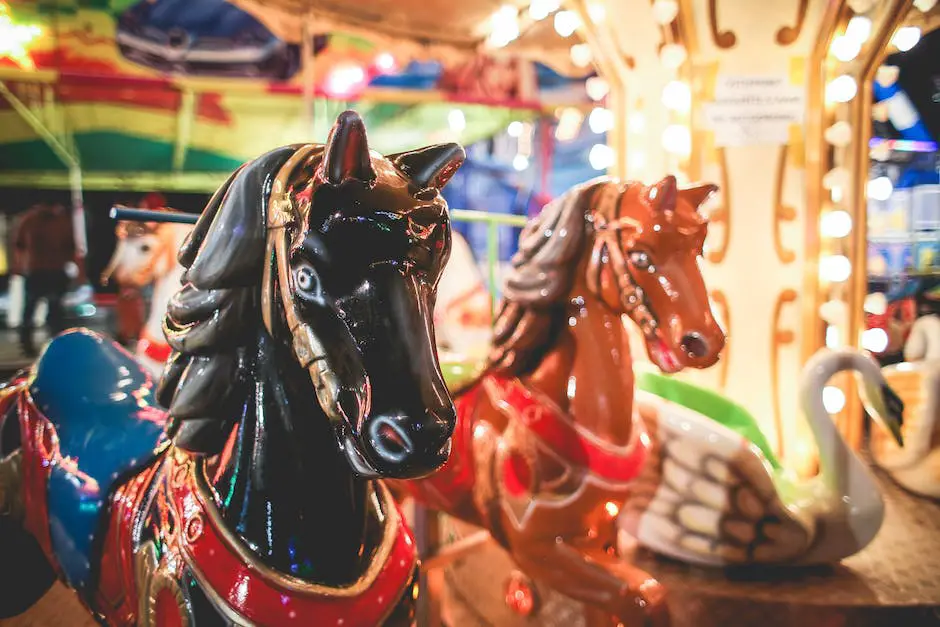From the thunderous escapades of medieval knights to the ornate pageantry of modern ceremonial parades, cavalcade horses have long been the living symbols of elegance and power. The storied history of these equine participants is a tapestry woven with the threads of tradition, showcasing breeds that have become synonymous with the spectacle and splendor of public processions. In exploring the majestic world of cavalcade horse breeds, we unveil the traits and histories that endow these animals with the capability to captivate audiences. We undertake a journey that begins in the annals of history and transports us to the very heart of what makes these horses emblematic icons of ceremonial grandeur.
Table of Contents (Horspedia)
History of Cavalcade Horses
The Rise of Cavalcade Superstars: How Some Horse Breeds Became Parade Favorites
When the bright colors and lively tunes of a parade fill the air, nothing captures the crowd’s admiration like a cavalcade of magnificent steeds. There’s a certain magic to the horses that lead the way; they prance, they dance, and they carry riders in gleaming costumes with such grace. Ever wondered how certain horse breeds became the darlings of these public spectacles? Well, saddle up, because we’re diving into the story of how some breeds galloped their way into the parade limelight!
It all starts with the “look.” Visually striking breeds often earn the top spots in a parade. Take the Friesian, for instance. With its shiny black coat and long, flowing mane, this breed looks like it stepped right out of a fairytale. Match that with their big, expressive eyes and you’ve got a crowd-pleaser that’s hard to forget.
Next up is the “movement.” To wow an audience, a horse needs to have more than just good looks; it has to move in an eye-catching way. The Andalusian breed, with roots in Spain, mesmerizes with its high-stepping and animated trot. It’s not just about speed; it’s about elegance and the ability to march to the beat of the band.
Personality is a big deal, too. Parade horses are surrounded by loud noises, cheering crowds, and all sorts of surprises. Breeds that are known for their calm demeanor and steadiness, like the Quarter Horse, handle this sensory overload with unflappable coolness. It’s this kind of temperament that makes them reliable when navigating the bustling parade route.
Let’s not forget about the “strength and stamina” factor. Parades can be quite lengthy, not to mention the time spent waiting and preparing. This is where breeds like the Clydesdale shine. Not only do they have the muscle to pull heavy carriages and floats, but they also have the endurance to keep going mile after mile, showing off their mesmerizing “feathered” hooves—the flowy hair around their lower legs—with each step.
Last but not least is “heritage.” Some breeds have a historical significance that resonates with people. The Arabian horse, with its ancient lineage and striking presence, carries an air of nobility and exotic history that enchants onlookers. Their appearances in parades often evoke a sense of journeying through time.
In conclusion, the breeds that have become favorites in parades have a mix of stunning looks, distinctive movements, chill personalities, hardiness, and often a touch of historical grandeur. It’s no wonder spectators love them; these horses aren’t just animals, they’re walking works of art bringing the pomp and pageantry of parades to life!

Characteristics of Cavalcade Breeds
Parade Perfection: What Makes a Horse Breed Cavalcade-Ready?
Parading is more than just a walk in the park – for both horses and their handlers. It’s a showcase, a chance to strut one’s stuff in style and with poise. When choosing a horse breed fit for a cavalcade, several factors come into play, ensuring that the spectacle is as mesmerizing for the audience as it is enjoyable for the participants.
Training and Adaptability
First up, let’s talk about trainability. A horse that absorbs and retains instruction is akin to gold dust in the parade ring. Trainability isn’t just about learning routines; it’s about adaptability under varying conditions – think crowds, noise, and unexpected situations. Illustrating intellect and a willingness to learn, breeds such as the Quarter Horse or the Morgan have a reputation for picking up cues quickly and acclimating to the hustle and bustle of a parade setting.
Size Matters – But It’s Not Everything
Size can influence a breed’s suitability, with larger horses often catching the eye and commanding space with their presence. Yet, it’s not the be-all and end-all. What’s crucial is proportion and how a horse carries itself with grace within its frame. From the majestic height of a Clydesdale to the more modest stature of an Andalusian, each breed presents its own type of elegance.
Grooming and Presentation
The glossy sheen of a well-groomed coat or the meticulous braiding of a mane can elevate the allure of a parade horse. Breeds with distinctive coats or unique coloring – think Appaloosas or Paints – stand out for their natural beauty that captures both the sun’s kiss and the spectators’ gazes. However, it’s important to keep in mind that while a striking appearance is a plus, it should never compromise on the demeanor or the health of the horse.
Cohesiveness in Costume and Tack
Sure, breeds must be eye-catching, but they should also serve as a cohesive canvas for costumes and tack. Embellishments should enhance, not inhibit. Breeds with a regal bearing, like the Friesian, offer a near-mythical backdrop for decorative attire, accentuating the pageantry. Still, the fit and comfort level while sporting this regal raiment is paramount to ensure the horse remains focused and unfazed.
A Sound Mind and Body
Lastly, the demands of a parade aren’t just on a horse’s temperament but also on their physical well-being. A breed with robust health, not prone to hoof issues or other ailments that could be exacerbated by parade conditions, is essential. They must be physically capable of moving at a steady pace and standing for periods without becoming restless or uncomfortable. Durable breeds such as the Belgian Draft or the Shire are known for their robust constitutions, making them reliable partners for even the lengthiest of processions.
At the end of the day, the horse breed that wins the crown for cavalcade participation is the one that strikes a fine balance between beauty and resilience, between personality and adaptability. It’s the horse that can thrive amidst the fanfare, complying with the splendor and discipline a parade demands. In this world of hoofbeats and heartbeats, it’s about creating an unforgettable experience for all. Now, saddle up and let the next cavalcade commence!

Popular Cavalcade Breeds
Let’s dive straight into the heart of cavalcades, where the equine stars strut their stuff with all the fanfare and majesty you expect from these stunning events. Here, some breeds stand out from the pack, consistently stealing the spotlight with their grace and presence.
One of the most familiar faces at these gatherings is the American Quarter Horse. Known for its agility, this breed brings an air of rugged charm to parades. With muscular frames that illustrate their strength, these horses can navigate the parade route easily, capturing the crowd’s admiration with their composed demeanor.
Not too far behind in popularity are the majestic Clydesdales. Their towering stature and feathered hooves are a sight to behold, and they are often synonymous with grand holiday parades and ceremonial processions. Thundering down the street, these gentle giants command attention, leaving parade-watchers in awe of their dignified bearing.
Cavalcades also frequently feature the versatile Paint Horse. Stemming from a cocktail of breeds with a heavy dash of American Quarter Horse lineage, these spotted beauties add a splash of color to the procession. Their easygoing nature and capacity to perform amidst the buzz of excited onlookers makes them a mainstay in the parade scene.
Then we have the Andalusian, or Pure Spanish Horse, which is the embodiment of elegance and refinement. Originally bred for nobility, these horses carry themselves with a regal air that’s perfectly suited for any high-stepping parade. Their flowing manes and tails can be adorned with ribbons, making their appearance nothing short of mesmerizing.
Another, the Morgan horse, with its compact frame and expressive face, dazzles onlookers with its polished trot and graceful maneuvers. Morgans are not only eye-catching but their unflappable nature ensures they are parade-ready, able to keep their cool when the drums roll and the crowd cheers.
Lastly, we can’t forget about the ever-graceful Arabian horse. With their distinctive head shape and high tail carriage, Arabians are natural showstoppers. They have a storied history of winning hearts in the show ring, and that same charm carries over to cavalcades, where their endurance and spirited personality shine.
Each breed, with its own unique attributes, contributes to the spectacular display in a cavalcade. Whether it’s through poise, color, or sheer size, these horses are not merely participants but the very symbols of the pageantry and tradition that make parades a cherished spectacle across communities. In the end, the spellbinding dance of hooves on pavement reminds us why these breeds are celebrated as parade favorites — it’s an art form in motion, a living tapestry that continues to enchant us all.

Training and Preparation
When horses step into the spotlight of a cavalcade, they’re not just walking; they are performing. The training that goes into preparing these equine athletes for parade life is intricate and requires patience, repetition, and a keen understanding of horse psychology.
Training starts with the basics. Horses need to be desensitized to the myriad of stimuli they’ll face in a parade: the noise of crowds, the clapping, music, street surfaces, and even the flapping of flags. Desensitization is done gradually. Trainers might first walk the horse around a quiet street, gradually introducing it to louder environments while rewarding calm behavior.
Consistency is key. A daily routine gives the horse stable expectations and helps to build trust with the trainer. Starting with groundwork, horses learn commands and cues. This foundation develops into more advanced skills like parade stepping, which is a high-stepping gait that many parade horses perform. They are trained to carry themselves proudly and keep in line with others.
Endurance training cannot be overlooked. Parades can be lengthy, and a horse standing or moving slowly over an extended period can tire more than one might think. Plus, many parades occur in the warmer months. Trainers ensure their horses have the stamina to make it through by incorporating long, slow distance work into their training regimen.
Socialization is another critical aspect. Horses in cavalcades need to be comfortable working closely with other horses and responsive to their rider, even in a stimulating environment. This is achieved through controlled exposure and positive reinforcement.
Let’s not forget the rider or handler, who is as much a part of the parade presentation as the horse. A good rider for parades is calm, confident, and skilled at managing a horse in a high-energy environment. Both must work as a unit, and this teamwork is honed through countless hours of practice.
Now, while much focus is placed on physical and mental preparation, appearance is equally important. Horses are bathed, brushed, and their coats, manes, and tails are made to shine. Hooves are polished, and any markings are accentuated with non-toxic highlights. The finishing touches, such as braiding or adding decorative elements, are practiced well in advance to ensure they don’t spook the horse on the big day.
Every element of the horse’s gear, from the saddle right down to the bridle, is chosen with both comfort and showmanship in mind. Tack must be secure but not inhibitive, allowing the horse to move naturally and breathe easily, all while glistening under the parade lights.
The true testament of parade-readiness comes as the cavalcade kicks off. A well-prepared horse will move confidently amidst the chaos, its training affording it the ability to shine in the spotlight, much to the delight of onlookers who witness the majesty and poise of these incredible animals. And with the final fanfare, as they trot off beyond the crowd’s view, they do so having cemented their place as not just participants in a parade, but as stars of the cavalcade.

Attire and Ornamentation
Ah, the cavalcade: a pageant of pomp and splendor where equine grace meets human artistry. Here, the conversation turns to the fabric and filigree that add a touch of magnificence to these equine performers: attire and ornamentation.
When hooves hit the parade route, the horses, magnificent in their own right, become canvases for a tapestry of vibrant colors, intricate designs, and lustrous adornments. It’s a time-honored tradition to outfit parade horses in garb befitting the occasion – be it a celebration of cultural heritage, a national holiday, or an official ceremonial event.
First off, let’s talk about attire. Parade horse attire is more than just a fancy blanket or a shiny saddle. It includes everything from ornate bridles and breastplates to plush, embroidered saddle pads and glistening stirrups. Each piece serves a dual purpose: to emphasize the horse’s natural lines and muscles, ultimately showcasing the animal’s noble profile, and to signify the parade’s themes and the rider’s associations.
In the domain of equestrian pageantry, clothes do indeed make the horse – or rather, they help tell a story. Traditional garb will reflect the horse’s breed and the culture from which it hails. For instance, a horse representing a Spanish procession might be decked out in a mantilla-inspired caparison, while a horse in a Celtic parade could sport tartan-patterned trappings.
Ornamentation is the glam and glitz that cut through the parade buzz. Adorning a mane with braids interwoven with ribbons or threading flowers into a tail isn’t just aesthetically pleasing. These decorations can demonstrate the painstaking care a rider takes in preparing their horse for public display, not to mention the hours invested in practicing those braiding skills. Such ornamentation can also chime with seasonal festivities – think autumnal leaves for a fall parade or sprigs of holly in December.
The bridle and headstall present another opportunity for embellishment. Silver inlays, brass fixtures or even crystal accents aren’t uncommon, and they’re not just there to sparkle under the sun. These elements resonate with the crowd, creating a collective gasp as the horse turns its head, reflecting the light and showcasing the craftsmanship.
As attention to detail is paramount, harmony in color and design between the rider’s attire and the horse’s gear can solidify the visual impact. A rider might wear a vest that matches the saddle pad, or gloves echoing the hues of the horse’s plume. It all contributes to a unified picture that defines a high caliber presentation.
However, beauty can’t come at the expense of function. Attire and ornamentation must always allow for the horse’s comfort and range of motion. There’s a delicate balance between fashion and the practical need to participate in an event that may last several hours.
Festooned with finery, these parade horses aren’t just walking – they’re telling a tale of history, art, and communal pride. With each step, plait, and polished shoe, parade participants communicate a deeper narrative of dedication to tradition and the continuity of equestrian excellence. Every twinkle of a crystal or swish of an ornately attired tail is the culmination of countless hours of preparation, care, and attention to detail – a synergy of horse and human intent on leaving an indelible mark on the memory of every spectator.

The regal procession of cavalcade horses, bedecked in their finery and moving in harmonious accord, leaves an indelible mark on those who witness their grace. These equine ambassadors, trained to perfection and selected for their striking attributes, continue to embody the historical and cultural significance of public celebrations. By examining their distinguished backgrounds, essential characteristics, and the meticulous preparations behind their awe-inspiring appearances, we gain a deeper appreciation of the connection between humankind and these noble steeds. As the last hoofbeat fades into the distance, we are reminded of the enduring legacy and continual evolution of cavalcade horse breeds, ever marching forward in the grand spectacle of human expression.
